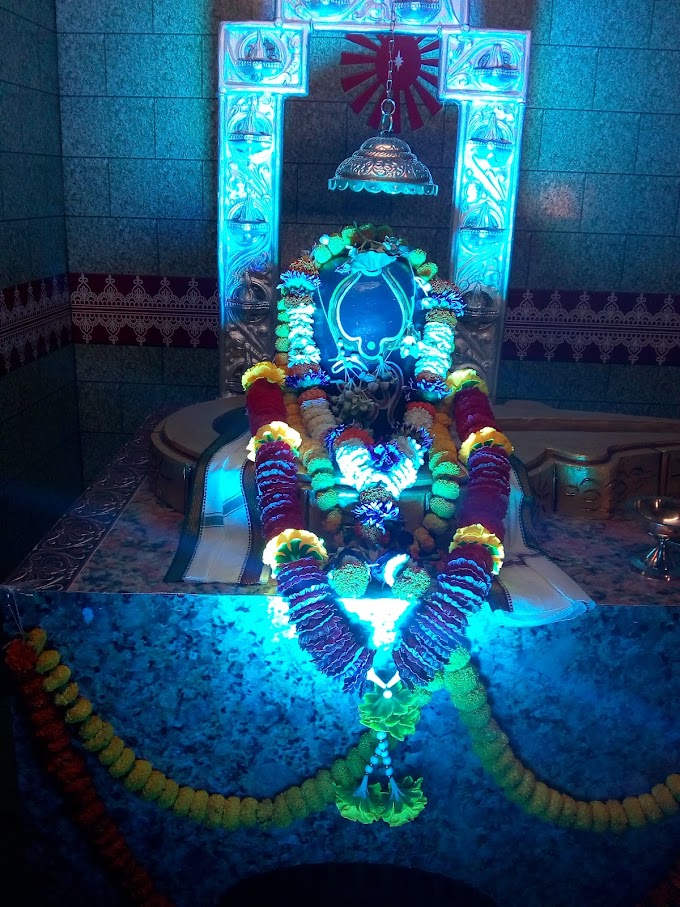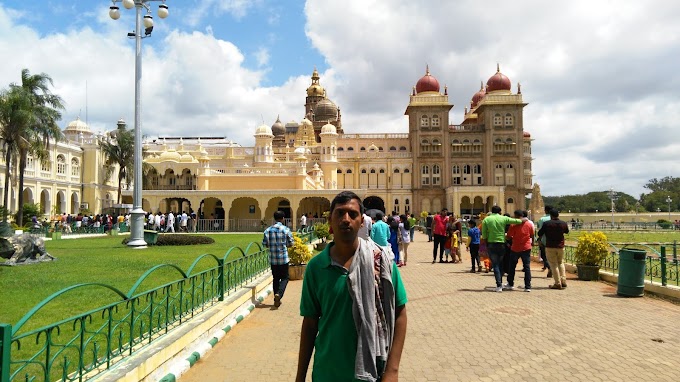SHAIVISM IN INDIAN CULTURE
India is famous for her culture all over world.
Indian culture us very old culture and that culture is still on continuing
process. Even in future the same process will be continued. Indian communism is
must bigger than other country which shows past, present and future.
Sections that follow different traditions or
ideologies of the same religion are called sect. The sect exists in
Hindu, Buddhist, Christian, Islam etc. religions. Under the sect, there
is a guru-disciple tradition which reinforces the tradition propounded by the
guru.
HINDU
RELIGIOUS DENOMINATION
Shaivash Vaishnavashchaiv Shakta: Saurastathaiva
Ch
|Ganapatyash hayagama: pranitha: shankareen tu || -Dev Bhagwat 4 Skanda
(1) Shaivism
(2) Vaishnavism
(3) Shakta sect
(4) Solar community
(5) Ganpat Sampradaya
(A) Matsyendramatha Nath Sampradaya
(B) Shankarmat Dasnami sect
(4) Excellencies cult
Cults of Buddhism
Denominations of islam
Sects of Jainism
Denominations of Christianity
Those who follow Lord Shiva and their
incarnations are called Shaivas. Shaiva has sub-sects like Shakta, Nath,
Dasnami, Naga etc. In the Mahabharata, four cults of Maheshvaras
(Shaivites) are mentioned: (i) Shaiva (ii) Pashupat (iii) Kaaladman (iv)
Kapalika. Shaivamat has its origins in the worship of Rudra in the
Rigveda. Rudra, the chief among the 12 Rudras, went on to be called Shiva,
Shankar, Bholenath and Mahadev.Shiva is represented in Yogamudra in many
Shiva-temples.
IMPORTANT
INFORMATION AND FACTS RELATED TO SHAIVISM
i)
Those who
worship Lord Shiva, the religion related to Shaiva and Shiva is called
Shaivadharma.
ii)
Early
archaeological evidence of Shivalinga worship is found from the remains of
Harappan culture.
iii)
The
Rigveda mentions a deity named Rudra for Shiva.
iv)
In the
Atharvaveda, Shiva is called Bhava, Sharva, Pashupati and Bhupati.
v)
The first
explicit description of Lingapuja is found in the Matsyapurana.
vi)
Linga
Puja is also described from the discipline festival of Mahabharata.
vii)
The
Vamana Purana mentions four Shaiva sects:
a) Pashupat
b) Kalplic
c) Kalmukh
d) Lingayat
viii)
Pashupat
sect is the most ancient sect of Shaivas. Its founder was Lavakulish who
is considered to be one of the 18 incarnations of Lord Shiva.
ix)
The
followers of the Pashupat sect were called Pancharathiks, the Pashupat Sutra,
the theoretical text of this doctrine.
x)
Isht Dev
of the Kapalik sect was Bhairava, the main center of this sect was a place
called 'Shail'.
xi)
The
followers of Kalamukh sect are called Mahavratadhar in the Shiva Purana.
People of this sect used to eat food, water and alcohol in the male-cranium
itself and rubbed the pyre on the body.
xii)
Lingayat
community was quite prevalent in the south. They are also called jangams,
people of this sect worshiped the Shiva Linga.
xiii)
The
Basava Purana mentions Vallabh Prabhu, the promoter of the Lingayat community,
and his disciple Basava, the sect was also known as the Veerashaiva sect.
xiv)
In the
tenth century Matsyendranath founded the Nath sect, this sect spread widely in
the time of Baba Gorakhnath.
Shankar or Mahadev is one of the most important
deities in the Aranya culture which is later known as Sanatana Shiva Dharma
(Shaivism). He is a god in the trinity. He is also called Mahadev,
the God of Gods. They are also known by the names Bholenath, Shankar,
Mahesh, Rudra, Neelkanth, Gangadhar etc. In Tantra Sadhana, he is also
known as Bhairava. Hindu Shiva Gharma is one of the main deities of
Shiva-Dharma. His name is Rudra in the Vedas. It is the conscience
of a person's consciousness. His name of Ardhangini (Shakti) is
Parvati. He has sons Kartikeya and Ganesh, and daughter Ashok
Sundari. Shiva is seen as a yogi in most paintings and is worshiped in
both Shivalinga and idol forms. The serpent god Vasuki is enthroned in
Shiva's neck and holds damru and trident in his hands. He lives in
Kailash. This is the basis of Shaivism. Shakti is worshiped in all
forms with Shiva in this opinion.
Destroyer of Shiva Sanskriti Other Namnilkanth,
Mahadev, Shankar, Pashupatinath, Gangadhar, Nataraja, Trinetra, Bholenath,
Rudrasiva, KailashiSambandhindu Devanativasasthana Kailash Parvatamantra Namah
Shivayaastratrishul, Pinaka Dhanush, Damrujivanasithiparivati Ganesha.
Shankar is called the God of Destruction.
Shankar ji is known for both his gentle appearance and his raunchy.
Believed to be from other gods. Shiva is the ruler of the origin,
condition and destruction of the universe. Lord Shiva is believed to be
the god of destruction in the trinity. Shiva is the eternal source of
eternal and creation process and this period is the basis of astrology.
Though the meaning of Shiva is considered to be welfare, but he has always
possessed both rhythm and holocaust. Ravana, Shani, Kashyapa Rishi etc.
are his devotees. Shiva sees everyone with equal vision, so he is called
Mahadev. Some of the famous names of Shiva, Mahakaal, Adidev, Kirat,
Shankar, Chandrashekhar, Jatadhari, Nagnath, Mrityunjaya [victorious over
death], Trimbak, Mahesh, Vishvesh, Maharudra, Vishadhar, Neelkanth, Mahashiva,
Umapati (Parvati's husband), Kaal Bhairav , Bhootnath, Evanyan (third eye),
Shashibhushan etc.
Lord
Shiva goes by the name of Rudra. Rudra means the one who removes the meaning of
the one who ends the sufferings and hence the nature of Lord Shiva is a welfare
factor. In the fifth chapter of Rudrashtadhyai, many forms of Lord
Shiva are described, assuming the Rudra deity to be the real movable
all-material form, all-caste human, animal, animal form, and the innermost
sense and best feeling has been proved, by knowing this feeling, the seeker
becomes Advaita loyalty. References Rudrashtadhyai Page No 10 Gita Press
Gorakhpur. According to the statement of Lord Rama in the Ramayana, one
who knows the difference between Shiva and Rama can never be dear to Lord Shiva
or Lord Rama. According to Rudra Ashtadhyayi under Shukla Yajurveda
Samhita, Surya Indra Virat Purush is a form of Lord Shiva for all the green
trees, food, water, air and welfare of human beings, Lord Shiva as Lord Surya,
well observe the deeds of human beings. By giving them the same result,
the meaning is that the whole creation is shivam. Humans get fruits according
to their own rules, that is, Lord Shiva provides rain water and other things to
those who have healthy intellect, and Shivji also provides the disease of
misery and death to those who are ill.











